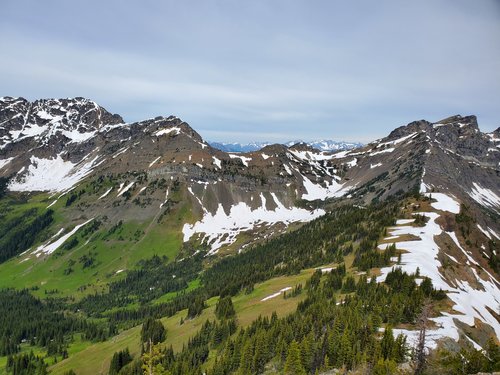44hunter45
Well-known member
+1There is no need to sign your tag after harvest in Idaho like most Western States but it is a good idea for both you and your friends to read the regulations multiple times to make sure you understand them. You could also put a copy of the regulations on your phone to reference while in the field. An easy error to make in Idaho is not leaving "evidence of sex" naturally attached to boned out meat.
You need to validate after the kill by cutting out the notches for month and date of kill. If you do not you will be cited if you are checked by a C.O.
Idaho no longer sends you a tag in the mail. You will get an e-mail with a printable tag. Print this ASAP. Trim it down from the 8 1/2x11" sheet and laminate it with packing tape or something. assume it will get wet in the field.
... out of shape hunting partners to gear selection to hunting schedule to game preparation or whatever you'd be inclined to share with us. ...
I always smile when someone says they are going to hunt Central Idaho and are not worried about being in shape. Central Idaho is STEEP. Google Earth can't picture it. It's not about being able to get from 8000' to the top, which is hard enough. If you spot a buck across a canyon, you have to be in good enough shape to get in place for a shot some time before tomorrow.Ok thanks. We are going to get diomox (sp) to help with the altitude acclimation. We plan to camp at 8000 and work our way up depending how it goes. Hunt high and sleep low as they say.
Central Idaho can kick your butt if you underestimate it. It is also possible to have the trip of a lifetime. My first trip to Idaho decades ago we drove in in the dark and slept under the truck. I woke up and rolled out and said, "Oh $hit, the topo didn't look like this." I was 24 years old and in top shape. There were multiple times in that 5 days I truly thought I was going to die. I got an elk and had the time of my life.
I loved it so much that I moved here.
Full disclosure, for me that feeling like I am going to die adds to the experience. Even at 59. Some day they may find my bleached bones, but it beats the hell out dying in bed or at a desk. I remind Mrs45 of this every season.
@BrianID has layed out some solid advice.
I've had some damned miserable nights in Central Idaho in October. I've gotten up in the morning to find my plastic military surplus canteen frozen and split open. Solid Ice.Be prepared for any kind of weather. Hypothermia is a real risk while backpack hunting in the mountains in October. I've had my water bottles freeze in my pack while hiking mid day hunting Idaho in October. I've also had many days that are 70 or even 80 degrees in the Idaho mountains in October. If the weather forecast isn't favorable, I wouldn't recommend camping too far from your vehicle if you are not an experienced backpack hunter.
I've had hypothermia before. It was not that cold. 40°F and wet. Hypothermia makes you do stupid, unsafe things.
Make sure you have onX hunt on your phone and know how to download offline maps before you lose signal. Cell coverage is basically nil. Use the wildfire layer on OnX to target glassing locations. Even without OnX, you will see the stands of burned out timber. In the dry country, glass hard around Mountain Mahogany trees and up high look hard around aspens. Glass the bottom line of canyon rim rock for bedding bucks.
You didn't say which unit you were hunting, so this is hard. You have three choices, Boise, Lewiston, or Missoula. I guess even SLC. Where you can get a suitable rental rig may be the most important variable.... These can be anything from fly in logistics...
Keep abreast of the highway conditions. Highways 20 and 21 were closed part the year last year. Highway 95 was closed for a while this summer as well. In Idaho, a road closure can mean VERY long detour.
Finally -
Do call the regoinal IDFG office and talk to the ungulate biologist. Don't ask them where you should hunt. Tell them your target destination drainages and ask them about herd health, age class, hunting pressure, etc. They may steer you somewhere else. They will be helpful, especially if they see you have done some homework and are not looking for an easy tag punch.





